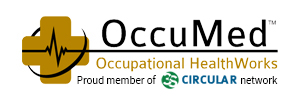Donating Blood Makes a Big Difference in the Lives of Others.
According to the Red Cross website – every two seconds, someone in the U.S. needs blood. It is essential for surgeries, cancer treatment, chronic illnesses, and traumatic injuries. Whether a patient receives whole blood, red cells, platelets or plasma, this lifesaving care starts with one person making a generous donation.
Facts About Blood Needs
- Approximately 36,000 units of red blood cells are needed every day in the U.S.
- Nearly 7,000 units of platelets and 10,000 units of plasma are needed daily in the U.S.
- Nearly 21 million blood components are transfused each year in the U.S.
- The average red blood cell transfusion is approximately 3 units.
- The blood type most often requested by hospitals is type O.
- Sickle cell disease affects 90,000 to 100,000 people in the U.S. About 1,000 babies are born with the disease each year. Sickle cell patients can require blood transfusions throughout their lives.
- According to the American Cancer Society, about 1.7 million people are expected to be diagnosed with cancer in 2017. Many of them will need blood, sometimes daily, during their chemotherapy treatment.
- A single car accident victim can require as many as 100 pints of blood.
Blood Supply Statistics
The Red Cross provides about 40% of our nation’s blood and blood components, all from generous volunteer donors. But supply can’t always meet demand because only about 3% of age-eligible people donate blood yearly. Each new donor helps us meet patient needs.
- Each year, an estimated 6.8 million people in the U.S. donate blood.
- 13.6 million whole blood and red blood cells are collected in the U.S. in a year.
- About 45% of people in the U.S. have Group O (positive or negative) blood; the proportion is higher among Hispanics (57%) and African Americans (51%).
- Type O negative red cells can be given to patients of all blood types. Because only 7% of people in the U.S. are type O negative, it’s always in great demand and often in short supply.
- Type AB positive plasma can be transfused to patients of all blood types. Since only 3% of people in the U.S. have AB positive blood, this plasma is usually in short supply.
- Red blood cells must be used within 42 days (or less).
- Platelets must be used within just 5 days.
You can make a difference. Learn more about giving blood on the Red Cross website redcrossblood.org
Find a local blood drive here: Red Cross Blood Drives
Does your company need onsite medical services? Learn more about how we can help improve your employee wellness program.


